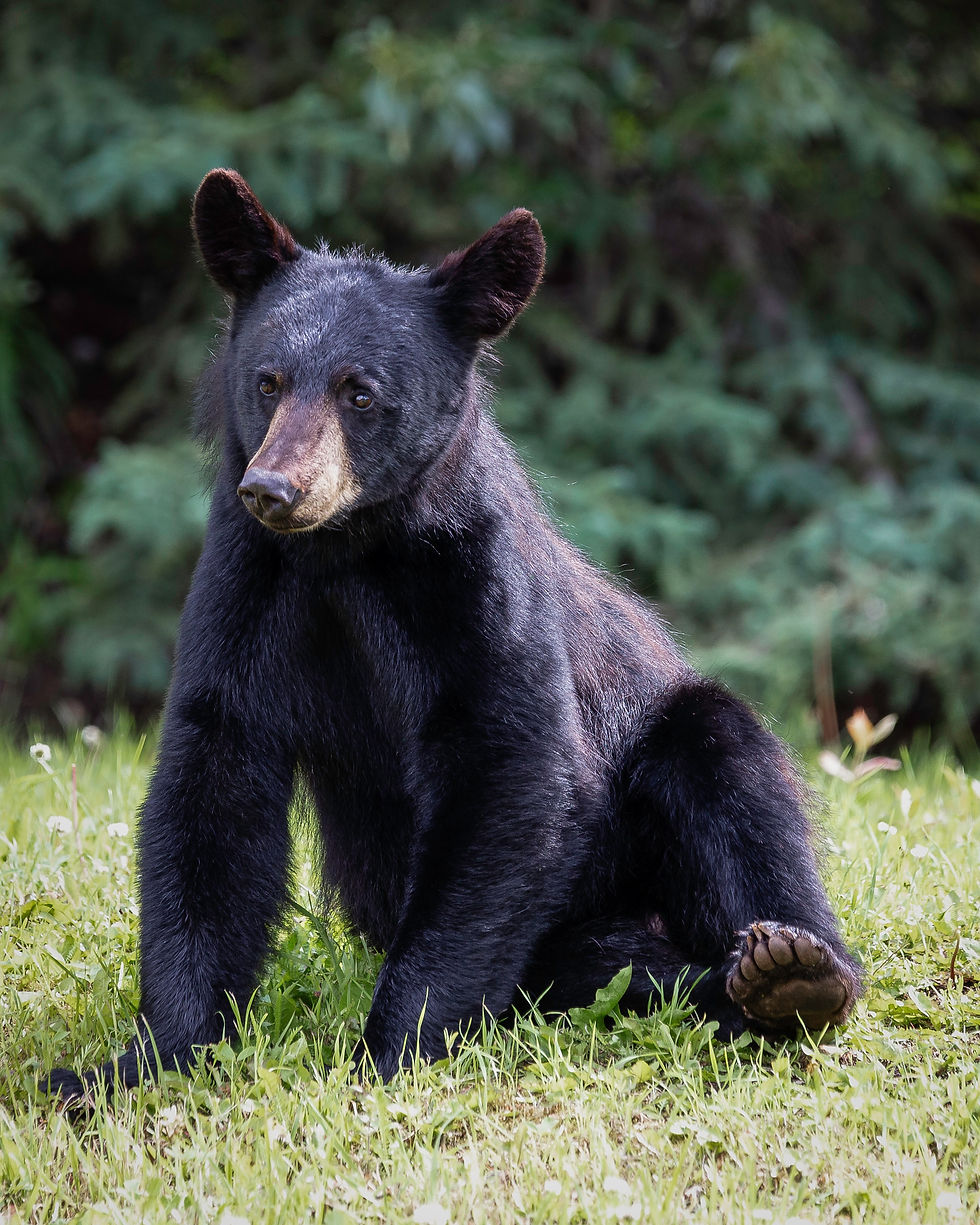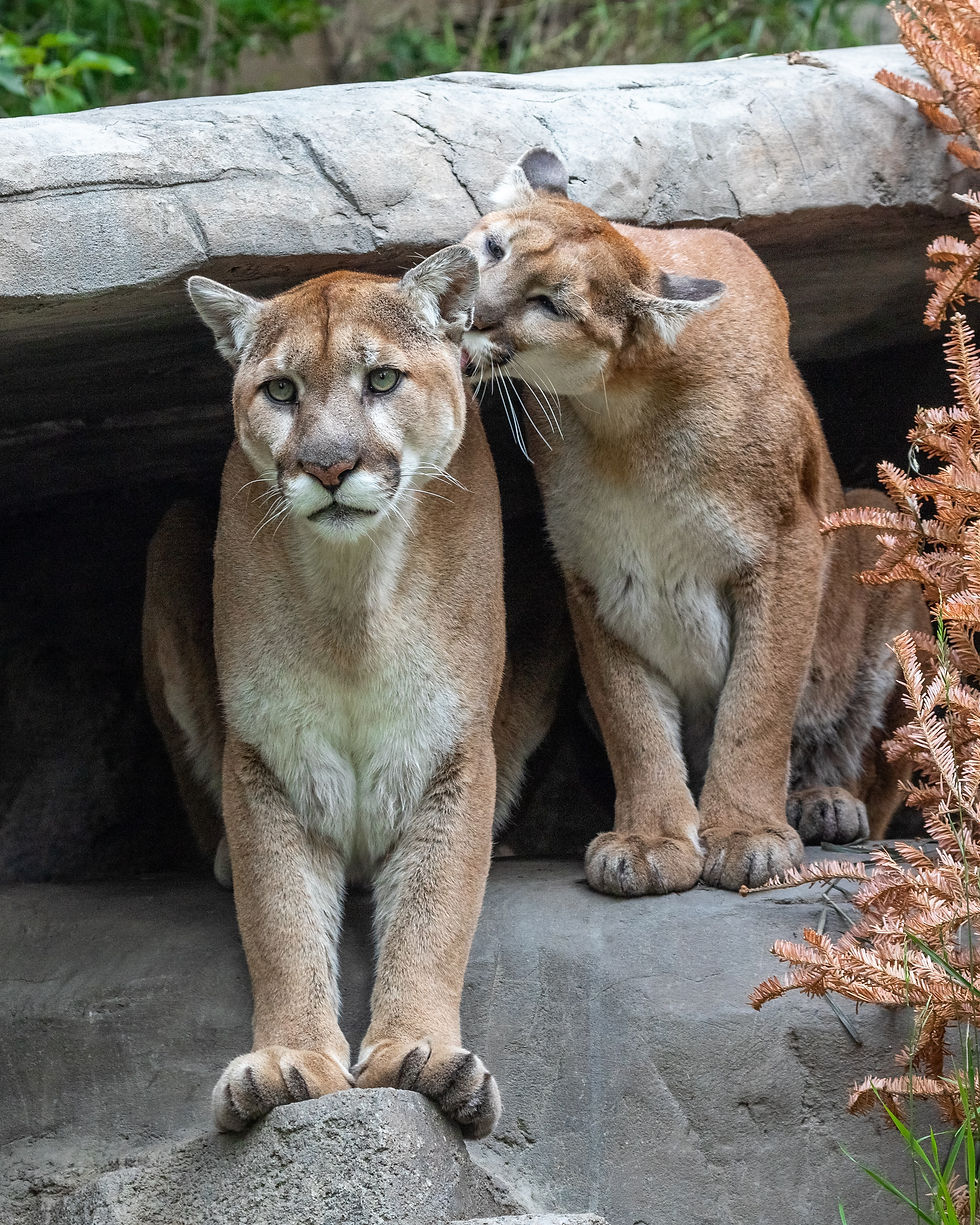How to Protect Yourself Against Unwanted Wildlife Encounters
- Christie Lynn

- Dec 5, 2022
- 6 min read
Updated: Dec 12, 2022
This question comes up quite often both on and off our tours and is an important topic to know about in order to protect yourself when exploring in the backcountry of Colorado.
Colorado is home to many types of wildlife including black bears, moose, elk, deer, mountain lions, bobcats, eagles and much, much more!
When you encounter wildlife from a safe distance it can be a very surreal experience that leaves you yearning for more!
But what happens when you come across an unwanted encounter with a predator at a not-so-safe distance? This can be a very frightening experience and can also become dangerous- if not prepared.
Predators such as bear or mountain lions are probably the most feared unwanted wildlife encounters by the majority of outdoor enthusiasts, but you should also add moose to that list.
In terms of which to be more mindful of, you should put moose first, bear second, and mountain lions third.
But before we get into specifics on each type of wildlife encounter...
Your number one best defense against an unwanted wildlife encounter is to make your presence known.
This can be achieved by making noise every so often like singing, clacking trekking poles together, whistling, or shouting out a random word. My go to is, "HEYO!!!!"
You should really avoid wearing headphones as you won't be aware of your surroundings or by playing loud music, as this is distracting and can be disrespectful to other fellow outdoor enthusiasts and smaller wildlife as well.
Remember, the great outdoors is not our home. We are merely visitors.

Moose you say? But they're so cute!
They are indeed cute, but they can also be very unpredictable and aggressive.
When threatened, moose are known to charge at people, kick and stomp at people and don't forget about their massive antlers!
If you come across a moose, look out for signs of it being stressed which include:
Ears back, hairs on hump raised, lowered head, and licking of lips.
If you come across a stressed-out moose:
Give the moose space and watch its behavior.
Never approach or feed a moose.
Always keep dogs leashed and under control at all times.
Stay calm and do not run away.
Make your presence known by talking loudly and backing away slowly in the direction you came.
Hide behind a tree or rock or try to get inside a vehicle or building if a moose charges at you or chases you.
Curl into a ball, protect your head and lie still until the moose leaves if you get knocked down by a moose,

Bears are not so cuddly after all...
Black bears are the only type of bear found in Colorado, although long ago Colorado used to be home to Brown Bears (Grizzlies) as well.
While fluffy and resembling that of a large dog, bears are not ones to mess with; although the urge to pet them or "boop their snoot" is awfully tempting... stay far far away!
Bear encounters can be very scary. I myself have encountered a bear while solo hiking in Alaska... in the middle of the backcountry. It was my first time encountering a bear so close, and all by myself.
Lucky for me, the bear had no interest, and I was able to scare it off easily.
A trick I learned in Alaska when I was guiding, is something I took to heart and continue to share with all of my guests to this day. Especially after I used it firsthand in this unwanted encounter.
How to scare a bear off....
There are several methods and tools you can use, but one if which is easily accessible to everyone, a 50-gallon trash bag.
Yes, you read that right. A large trash bag is a great defense against a bear,
If you've ever flicked out a trash bag in front of your pets and they got scared and ran away.... it's the same concept with bears.
The size and noise of the trash bag is typically more than enough to scare them off.
The bear I used this on bolted off into the woods, further than the eye could see.
You'll want to make sure you have the trash bag pre-flicked out and rolled up from the bottom of the bag to the opening of the bag, in an easily accessible pocket.
Alternatives to this include bear spray, or if you're in a park or open space that allows for firearms, you may carry a firearm as well. ***Please use a firearm as a very last resort if the bear you have encountered is showing aggression and won't leave.***
Please use caution when using bear spray and know how to use it before having to use it. Also be aware of wind direction if you have to spray it.
It would not be pleasant to have those odds against you.
Same with firearms. Please check local restrictions, carry laws and know how and when to use a firearm. Safety first!
What to do if a black bear approaches you:
Stand and face the bear directly. Never turn your back or approach them.
Make yourself look big by spreading your arms and waiving them.
Make noise by yelling at the bear as loud and as intimidating as you can.
Have a trash bag/bear spray and use those to scare it off if a bear approaches you.
Fight back in the very rare case that a black bear does attack you (don’t play dead).
Remove whatever attracted it after the bear leaves (barbecue grill, bird feeder, pet food or garbage).

Meowntain Kittens? How scary are they really?
Over the years I've adopted the term meowntain kittens as an alternative to mountain lions.
What can I say? I'm a cat lover!
And while I've never seen a mountain lion in the wild, I guarantee you they've seen me!
Mountain Lions, Cougars, Pumas, Panthers and Catamounts, are all terms used for these elusive cats (depending on what part of the country you're in)
While these big cats are extremely intimidating, these predators are the most likely to leave you alone.
You see, we look nothing like their prey! In fact, they are usually just as intimidated by us as we are of them.
Sounding skeptical? Well then, how about some facts for taste...
"People rarely get more than a brief glimpse of a mountain lion in the wild. Lion attacks on people are rare, with fewer than a dozen fatalities in North America in more than 100 years."
I know, I know... most of you have seen the video of the man in Utah who had a mountain lion lunging at him for what felt like eternity, but in this particular case, the lion was defending her cubs and was trying to scare the man away.
Although terrifying, and understandably so, these types of encounters don't happen all too often in Colorado, but when they do it is either because there are cubs nearby or humans were near the lions' cache of food.
Mountain lions typical diet include birds, rabbits, racoons, fox, deer, insects and on occasion, vegetation and usually hunt at dusk.
They attack their prey, then partially bury it in a cache, and come back to periodically feed off of it throughout the week.
A cache is typically out of sight and generally far away from where humans roam but almost always has a very pungent, noticeable smell.
If you smell something out of the ordinary while in the backcountry and have a general sense of "something isn't right" trust that gut instinct and leave the area immediately.
Making your presence known is so important in the backcountry, especially in low-traffic areas where there are less people. It also prevents startling wildlife and activating a defense response from them,
What to do if you encounter a Mountain Lion:
Go in groups when you walk or hike in mountain lion country and make sure children are close to you and within your sight at all times.
Do not approach a lion. Most mountain lions will try to avoid a confrontation. Give them a chance to escape.
Stay calm when you come upon a lion. Talk calmly and firmly to it. Move slowly.
Stop or back away slowly, if you can do it safely. Running may stimulate a lion's instinct to chase and attack. Face the lion and stand upright.
Make yourself appear larger. Raise your arms. Open your jacket if you're wearing one. If you have small children with you, protect them by picking them up so they won't panic and run.
Throw stones, branches or whatever you can get your hands on without crouching down or turning your back if the lion behaves aggressively.
Fight back if a lion attacks you. Lions have been driven away by prey that fights back. People have fought back with rocks, sticks, caps or jackets, garden tools and their bare hands successfully. Remain standing or try to get back up!
Once again, your BEST DEFENSE against unwanted wildlife encounters if to MAKE YOUR PRESENCE KNOWN.
I can't say this enough to people. It may feel strange making noise on the trail at first, but don't let that sway you into doing the opposite.
I have spent a good portion of my life in the backcountry, many times alone, and I can proudly say I've only ever encountered that one bear when I was least expecting it.
And guess what? I wasn't making any noise that day.
As always, please reach out should you have any questions or need clarification on any of these topics. I am always happy to help! I want you to feel comfortable and confident in the outdoors.
Best,
Christie Sondrup
info@blueskywilderness.com

Comments